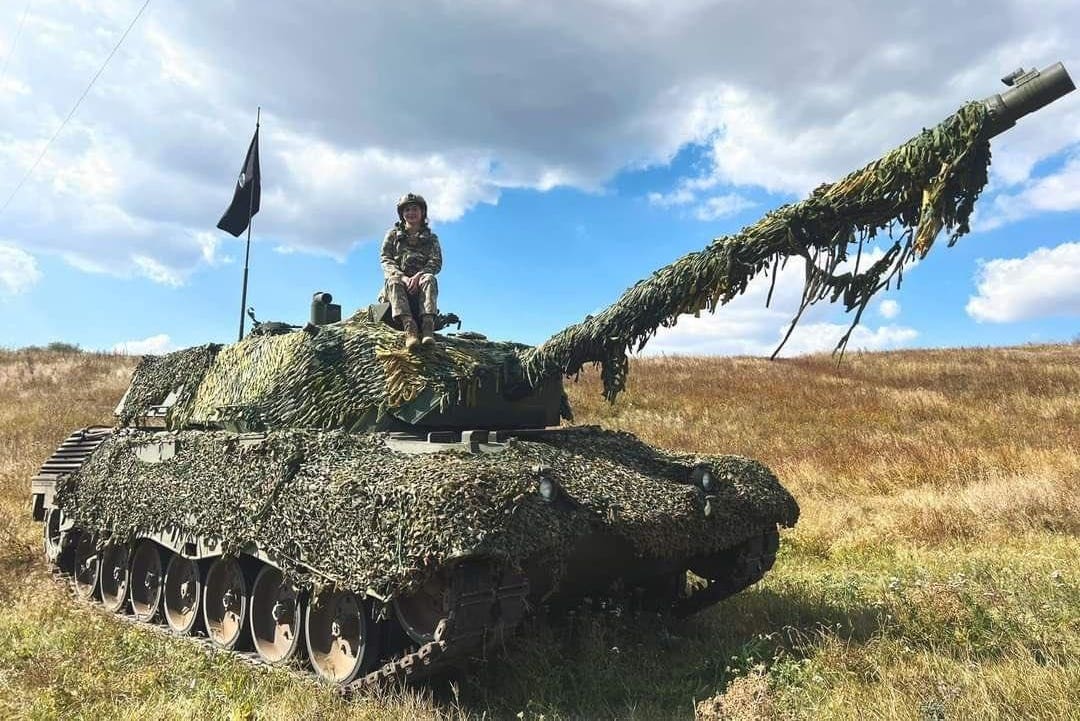Denmark has pledged to Ukraine another 30 surplus Leopard 1A5 tanks, bringing to nearly 200 the number of the 40-ton, four-person tanks Kyiv should receive in the coming months from a Belgian-Danish-German consortium.
Hopefully the long-stored tanks actually work.
The German-made, 1980s-vintage Leopard 1A5 with its precise day-night optics and stabilized 105-millimeter main gun is an excellent long-range shooter—and highly mobile.
What it isn’t, is heavily protected. Its steel armor is just 70 millimeters thick at its thickest. That’s a tenth the protection that the 2000s-vintage Leopard 2A6 enjoys.
It’s not for no reason that one Danish tank instructor, drilling with Ukrainian crews at a base in Germany, stressed to his trainees the importance of fighting in their Leopard 1s at night and while on the move—tactics that leverage the aged tank’s best qualities while mitigating its greatest weakness: its inability to take hits and still stay in the battle.
“These are some of the things our Ukrainian friends must learn to exploit,” the instructor said.
But no amount of tactical ingenuity can make a broken tank run. And there are worrying signs that at least some of the 40-year-old Leopard 1s are in bad repair, even after German industry refurbished them for onward transfer to Ukraine.
According to Der Spiegel, Ukraine rejected a batch of 10 Leopard 1s owing to the tanks’ poor material condition. Similarly, several other Leopard 1s that arrived in Ukraine over the summer immediately broke down. German officials determined that the tanks wore out during intensive, two-week training courses for Ukrainian crews that began this spring, and should continue into next year.
Ukrainian units, including the new 44th Mechanized Brigade, already have begun to field Leopard 1s, so at least some of the tanks are in working condition. But for the Ukrainians, it surely is discouraging that perhaps a third or half of the old tanks that so far have shipped to Ukraine were broken on arrival.
Contrast the Leopard 1s’ condition with the excellent state of Ukraine’s heavier Leopard 2s. Ukrainian brigades operate a mix of 20-year-old Leopard 2A6s and Strv 122s—which are Swedish versions of the Leopard 2A5—as well as 40-year-old Leopard 2A4s.
The 69-ton Leopard 2s are robust and, considering the absence of scandal, reasonably reliable. In three months of hard fighting that began with the launch of simultaneous Ukrainian counterattacks across several axes in southern and eastern Ukraine, Kyiv’s forces have lost just six of the 72 Leopard 2s they so far have received.
Several of the Leopard 2s have been damaged, recovered, repaired and returned to the fight. Others have shipped off to Germany or Poland for deeper repairs. That so many of the heavier tanks are recoverable and repairable speaks to the soundness of their designs and their overall good technical condition.
The Leopard 1s might not prove as survivable or reusable. If a Leopard 1 is in such poor condition that Ukraine rejects it outright on arrival, imagine what might happen to the same tank in the stress and violence of actual combat.
And that’s leaving aside the Leopard 1’s innate fragility—a consequence of its deliberately lightweight design.
Count on the Ukrainians to do their best with the equipment they have. Also count on the Ukrainians to accept risks that end up badly costing them. Consider what happened after Ukrainian marine commanders, desperate for firepower, shoved their well-armed but lightly-protected ex-French reconnaissance vehicles to the front of one of their initial counterattacks in southern Ukraine in June.
The AMX-10RC recon vehicles got blasted by artillery. After at least one four-person crew died in a secondary explosion, the marines pulled back the vehicles and assigned them to a safer mission doubling as artillery.
What hard lesson will Ukrainian tankers learn when they first ride their old Leopard 1s into battle?
Read the full article here





